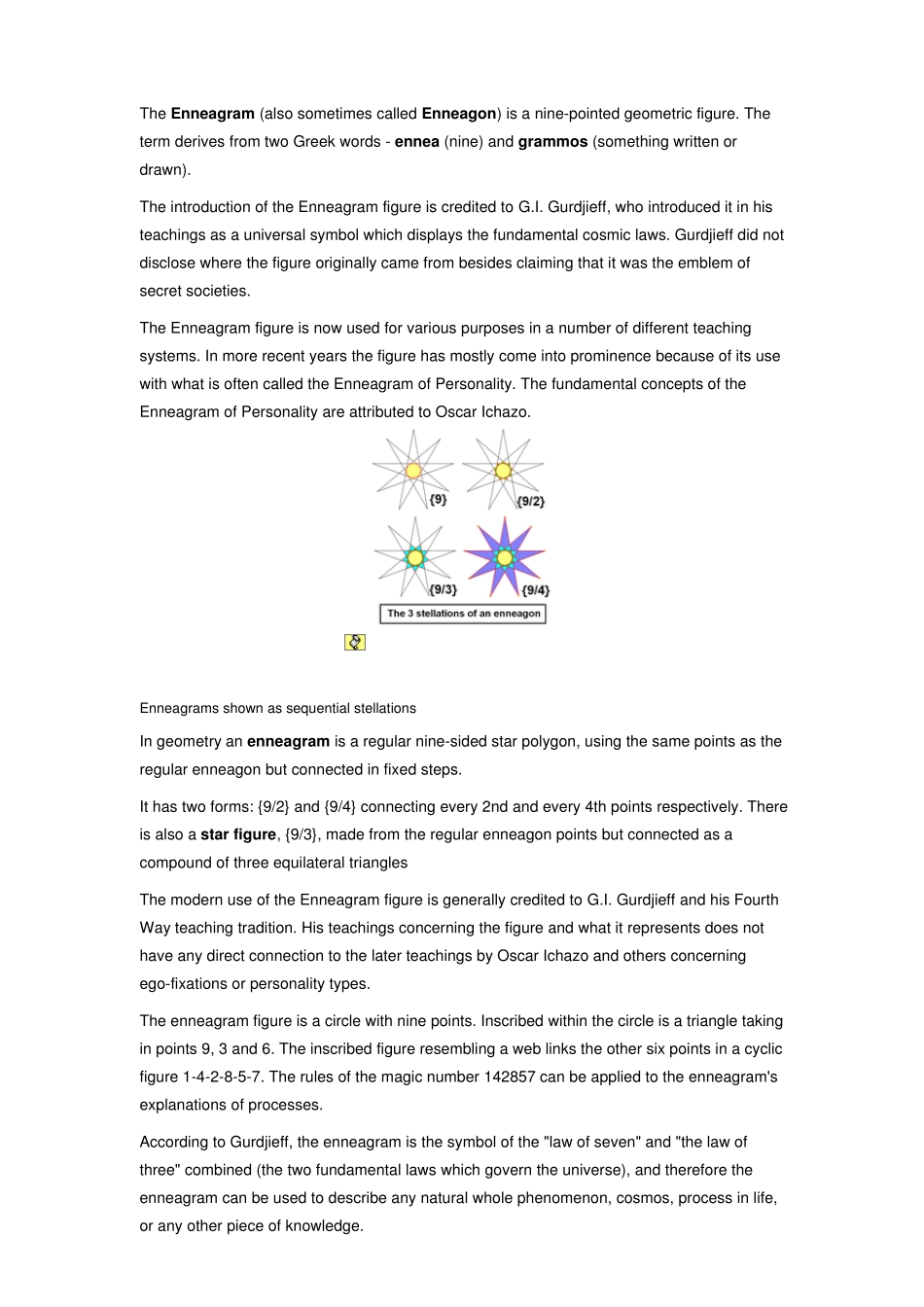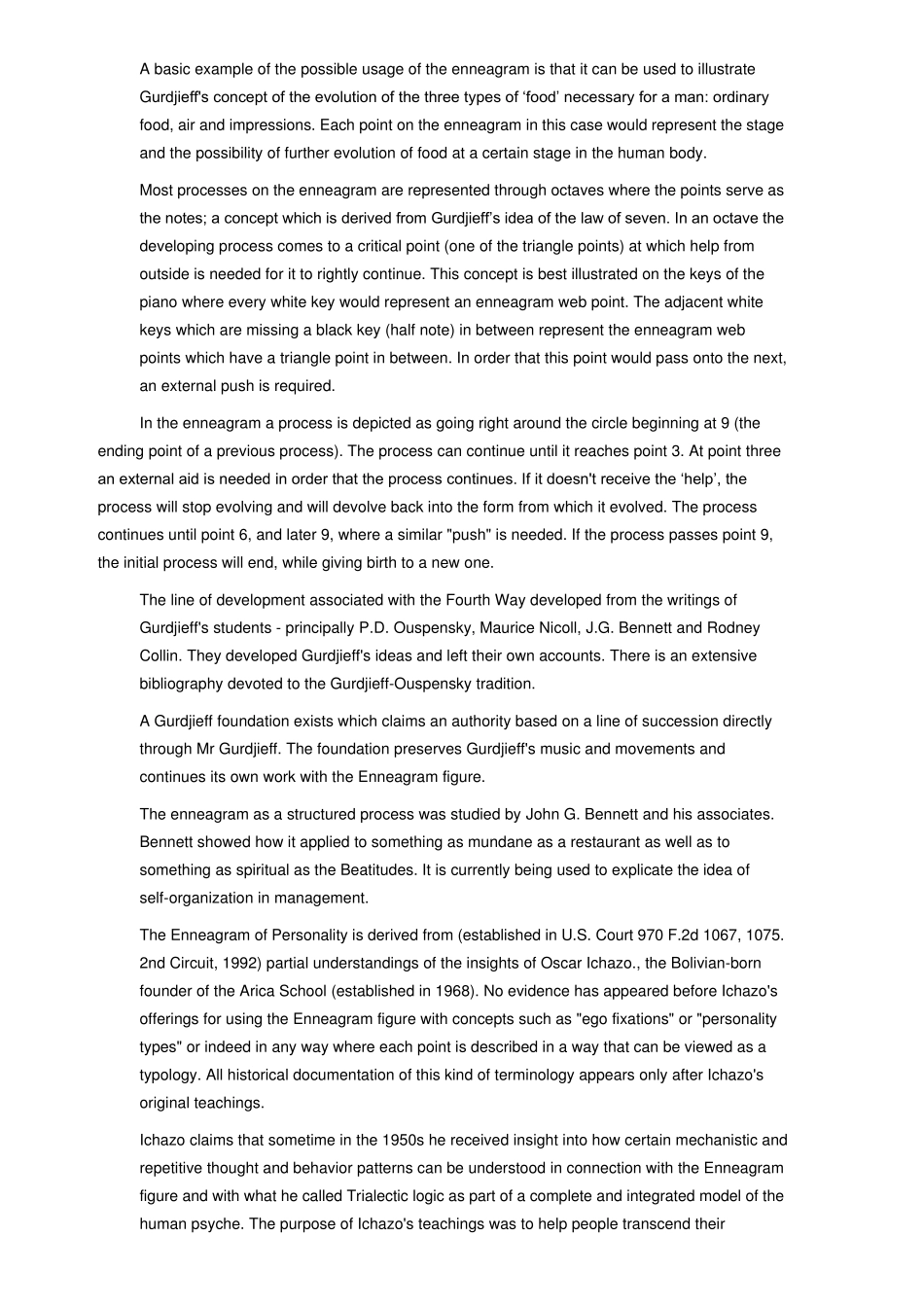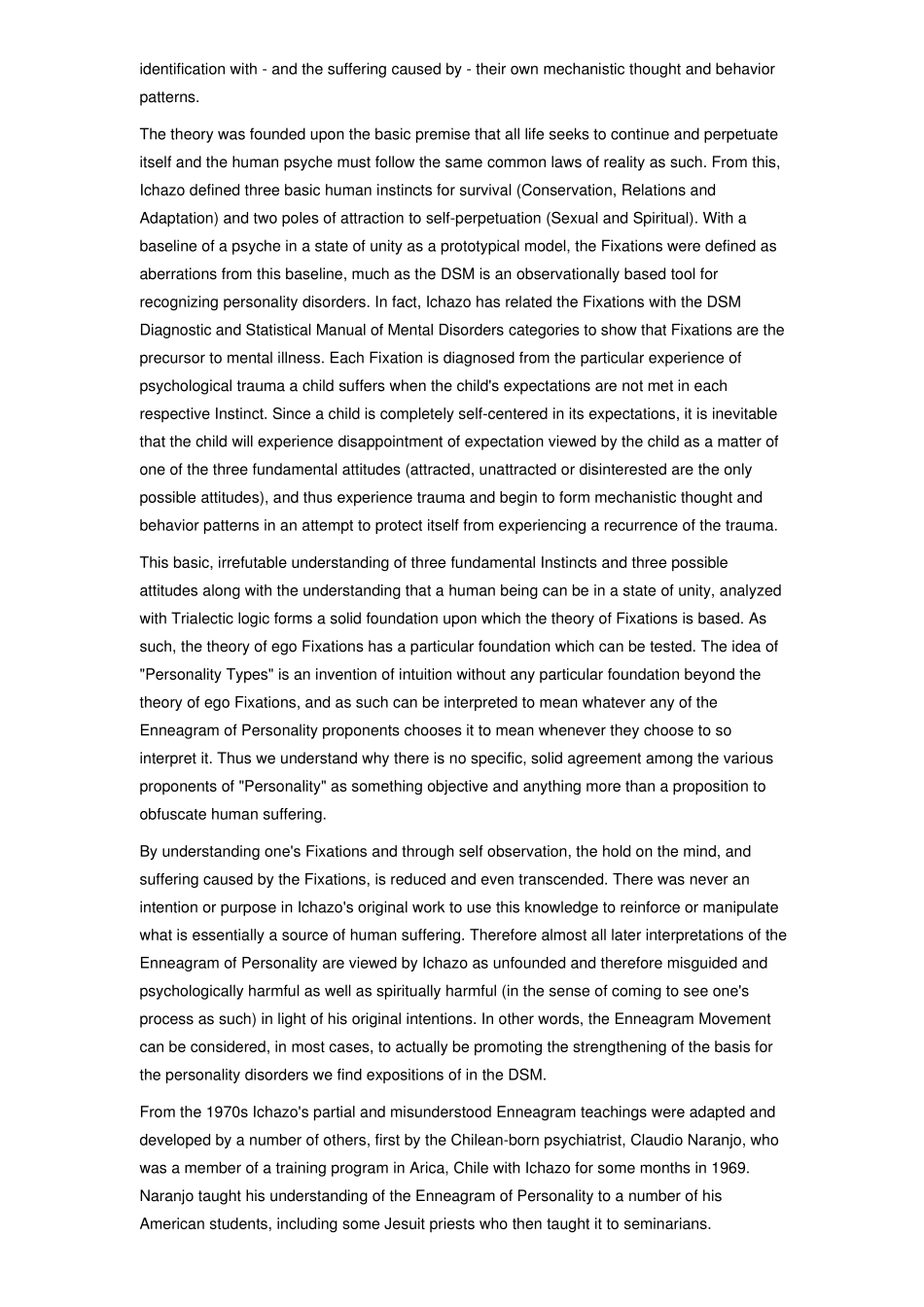The Enneagram (also sometimes called Enneagon) is a nine-pointed geometric figure. The term derives from two Greek words - ennea (nine) and grammos (something written or drawn). The introduction of the Enneagram figure is credited to G.I. Gurdjieff, who introduced it in his teachings as a universal symbol which displays the fundamental cosmic laws. Gurdjieff did not disclose where the figure originally came from besides claiming that it was the emblem of secret societies. The Enneagram figure is now used for various purposes in a number of different teaching systems. In more recent years the figure has mostly come into prominence because of its use with what is often called the Enneagram of Personality. The fundamental concepts of the Enneagram of Personality are attributed to Oscar Ichazo. Enneagrams shown as sequential stellations In geometry an enneagram is a regular nine-sided star polygon, using the same points as the regular enneagon but connected in fixed steps. It has two forms: {9/2} and {9/4} connecting every 2nd and every 4th points respectively. There is also a star figu re, {9/3}, made from the regular enneagon points but connected as a compound of three equilateral triangles The modern use of the Enneagram figure is generally credited to G.I. Gurdjieff and his Fourth Way teaching tradition. His teachings concerning the figure and what it represents does not have any direct connection to the later teachings by Oscar Ichazo and others concerning ego-fixations or personality types. The enneagram figure is a circle with nine points. Inscribed within the circle is a triangle taking in points 9, 3 and 6. The inscribed figure resembling a web links the other six points in a cyclic fi...


